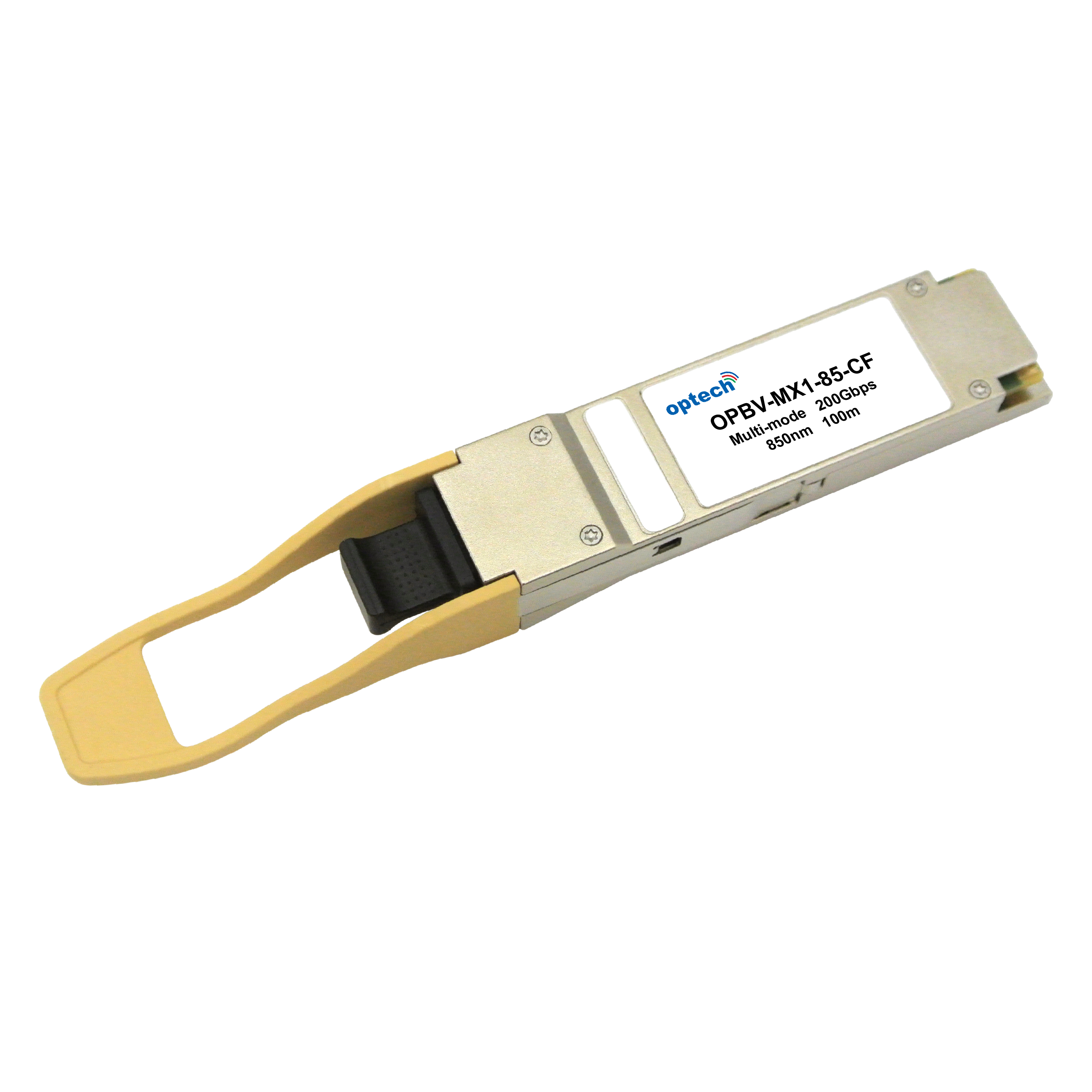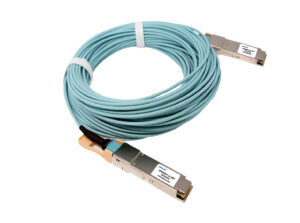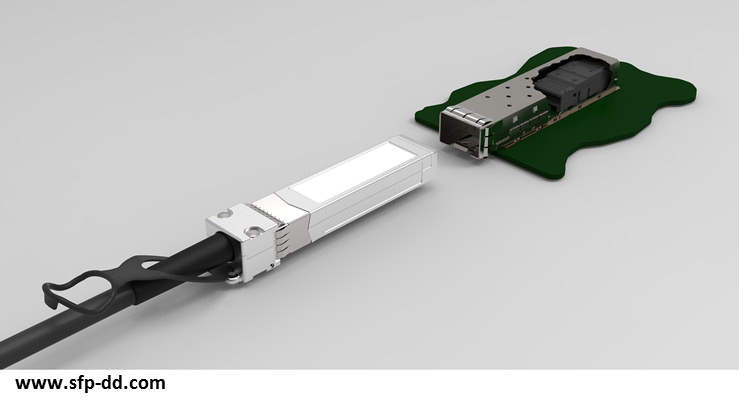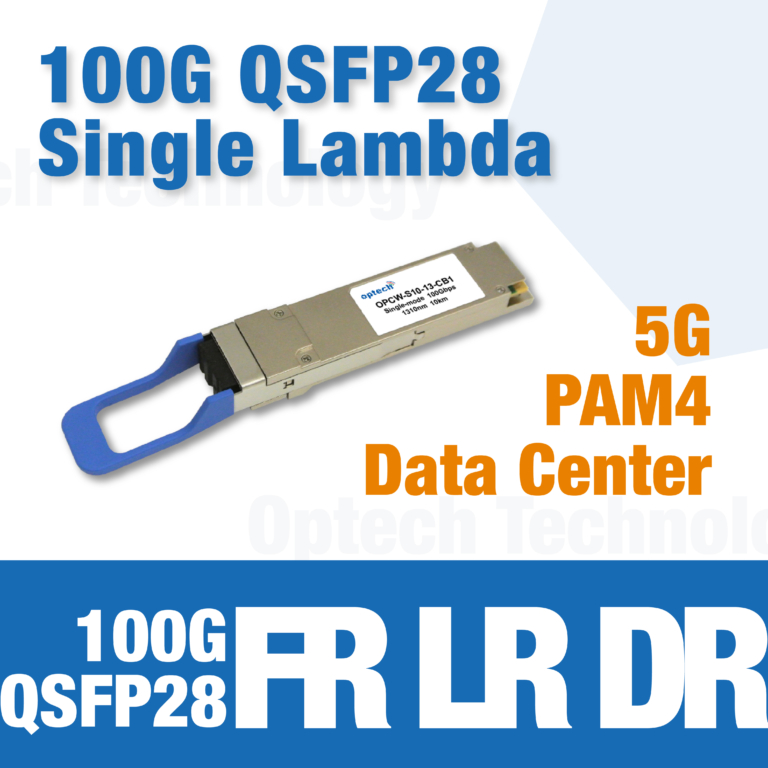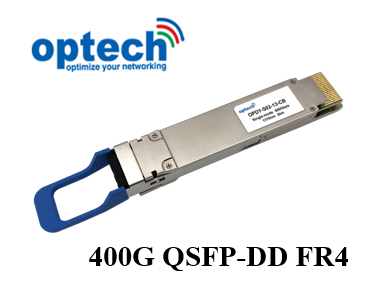Introduction to 200G QSFP56 Transceives and Cables
Edge computing, 5G, Virtual Reality and Artificial Intelligence will continue to expand in 2022, bringing an explosive growth of data. To remain competitive and keep up with the new technologies, data centers need higher speed optical transceivers and cables.
In the past few years, 100G QSFP28 optical transceivers and cables have become the new standard for the data center market. However, as data traffic is continuously expanding, 100G QSFP28 interconnects won’t be enough for data centers to support the pressure of an endless traffic growth generated by new technology.
For this reason, we can expect in the following years to see the 200G QSFP56 and 400G QSFP-DD slowly turning in the new standard for data centers. This article will introduce the 200G QSFP56 and the evolution of the QSFP family over the years.
What is 200G QSFP56?
The name of the 200G QSFP56 comes from the fact that its electrical interface can handle four channels of 50G each, potentially up to 56G. QSFP stands for Quad Small Form-factor Pluggable [Q stands for Quad, which means 4].
Four different technologies can be found among the QSFP56 family: Multi-mode Transceivers, Single-mode Transceivers, Direct Attach Cables (DAC) and Active Optical Cables (AOC).
The 200G QSFP56 portfolio covers distances from 1m, with DAC to 40km with the 200G QSFP56 ER4.
The Evolution of the QSFP Family Form Factors
Currently, the QSFP family form factors include four different data rate speed: 40G QSFP+, 100G QSFP28, 200G QSFP56 and 400G QSFP-DD.
40G QSFP+, 100G QSFP28, 200G QSFP56 have respectively four channels of 10G, 25G and 50G. The most significant change from QSFP+ and QSFP28 to QSFP56 is that QSFP56 made the change from NRZ (Non-Return to Zero) technology to PAM4 (four-level pulse amplitude modulation) technology.
The great advantage of the QSFP family form factors is its backward compatibility between all the QSFP. Indeed, the QSFP-DD ports will also support 40G, 100G and 200G which will facilitate and reduce the cost of the network migration toward the 400G.
From 200G QSFP56 to 400G QSFP-DD
With the constant growth of data traffic, the requirements for bandwidth and port density are also increasing. For this reason, the 200G QSFP56 interconnects might not be enough and the development of the 400G QSFP56-DD quickly followed. Today, for simplicity, the 400G QSFP56-DD is better known under the name 400G QSFP-DD.
QSFP-DD stands for Quad Small Form Factor Pluggable Double Density. 400G QSFP-DD follows the system of the others QSFP form factors, but the QSFP-DD will support eight lanes instead of four lanes, which double the density. Each of the eight lanes will operate a data rate up to 50Gb/s providing a 400Gb/s data speed and increasing the capacity of the QSFP56 by two.
To know more about 400G QSFP-DD click here.
200G QSFP56 Transceivers and Cables
200G QSFP56 SR4 Optical Transceiver
200G QSFP56 Active Optical Cable
200G QSFP56 Transceivers and Cables Application
- Data Center Interconnect
- 200G Ethernet
- Infiniband interconnects
- Enterprise networking
About Optech
Optech Technology Co. Ltd was founded in 2001 in Taipei, Taiwan. The company was created with a sole purpose, to provide a wide and high quality portfolio of optical products to a very demanding and fast evolving market.
To respond to the permanent increase of IP traffic, Optech portfolio is constantly growing. Since the beginning, the company has always been up to date with the latest innovations on the market. Today, we are proud to deliver a large selection of 25G SFP28, 40G QSFP+, 100G QSFP28 and 400G QSFP-DD optical transceivers and cables.
Optech has a large portfolio of products which include optical transceivers, direct attach cables, active optical cables, loopback transceivers, media converters and fiber patch cords.
Through its large selection of optical products, that have a range of data speed from 155 Mbps to 400 Gbps and reach distances up to 120km, Optech products are suitable for various industries such as telecom, data centers as well as public and private networks.
For more information you can visit www.optech.com.tw or contact us at sales@optech.com.tw.

